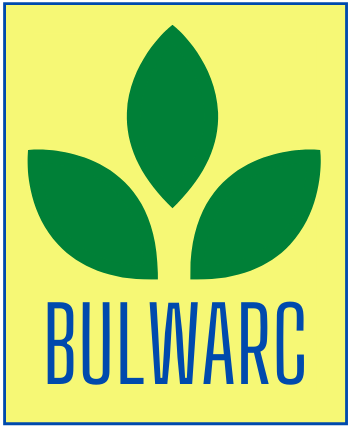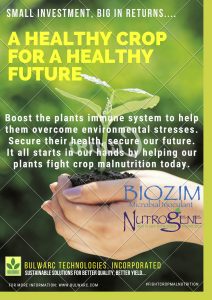
Feeding Plants While Starving the Soil: Rethinking Fertiliser Logic in the Age of Collapse
Global Soil Health Expert (SHE™) | Creator of Soil Intelligence Framework | Systems Strategist at PRESICA TECH | Leading Regenerative Agriculture in the Tropics
May 28, 2025
By Dr. Suzie | Soil Health Expert (SHE™)
Introduction: The Fertiliser Paradox
“Fertilisers support 50% of global food production. Yet 33% of the world’s soils are degraded — and by 2050, that number could reach 90%.”
This paradox defines the modern agricultural dilemma. For decades, the emphasis has been on feeding crops with chemical precision, while the health of the soil beneath them silently erodes. As we navigate food insecurity, rising emissions, and collapsing ecosystems, it’s time to challenge a dangerous orthodoxy: that yield alone is the measure of success.
If we are to feed a growing population, mitigate climate change, and restore our biosphere, we must urgently evolve fertiliser logic from productivity-first to ecosystem-first. And that begins with the soil.
The Silent Crisis Beneath Our Feet
According to The Future of Fertiliser report (Anglo American & Deloitte, 2024), one-third of global soils are already moderately to highly degraded. FAO data warns that over 90% of Earth’s topsoil could be at risk by 2050 if trends continue. The consequences are catastrophic:
- Over 2 billion people suffer from micronutrient deficiencies
- Fruits and vegetables have lost 25–50% of their nutrient density since 1950 (Davis et al., 2004)
- Hidden hunger contributes to US$3 trillion in annual global healthcare costs (WHO, 2020)
These outcomes are not random. They are the direct result of decades of unbalanced fertiliser regimes that prioritise NPK and ignore the biological, structural, and micronutrient dimensions of soil health.
Fertiliser and Emissions: The Dirty Secret
The same fertilisers that fuel our crops are accelerating planetary instability. Key findings include:
- Fertiliser production and use contribute 2–7% of global greenhouse gas emissions — more than aviation and shipping combined.
- Nitrogen fertilisers leak nitrous oxide (N₂O), a gas 298 times more potent than CO₂.
- Less than 50% of applied nitrogen is absorbed by crops; the rest leaches into water bodies or enters the atmosphere (IFA, 2022).
This is not just inefficient — it’s existentially reckless. We are, quite literally, fertilising climate change.
Only half of what we apply becomes food — the rest becomes pollution

The Soil Health Disconnect: Fertiliser’s Blind Spot
Most fertiliser models address only chemical fertility. But soil health is multidimensional:
- Chemical: Nutrient availability (NPK, micronutrients)
- Physical: Soil structure, porosity, water-holding capacity
- Biological: Microbial life, organic matter, root interactions
Yet fertiliser strategies continue to treat soil as inert. There is no widespread integration of microbial diagnostics, no benchmarks for carbon restoration, and no incentives tied to soil vitality.
This reductionism has pushed modern agriculture to the brink.
Sustainable Fertiliser? Still a Mirage Without Metrics
The Future of Fertiliser report highlights a critical gap: there is no globally accepted definition of what constitutes a “sustainable fertiliser.” Claims abound — from green ammonia to polyhalite — but few are transparently measured on:
- Lifecycle emissions
- Impact on soil microbiome
- Nutrient density outcomes in food
- Biodiversity or water cycle restoration
In short, we are labelling inputs as “sustainable” without verifying their outcomes.

90% of fertiliser regimes only target 1/3 of soil health
The Shift We Need: From Yield to Regeneration
It is time to retire the yield-only success metric. Fertiliser must:
- Regenerate degraded soils
- Improve nutrient uptake efficiency
- Restore carbon and microbial cycles
- Support economic resilience for farmers
- Enhance nutritional value of food
This transformation won’t come from inputs alone. It demands an ecosystem shift:
- From synthetic dominance to biological integration
- From input subsidies to soil health incentives
- From chemical fertilisation to soil intelligence systems
A Soil-First Vision: The SHE™ Framework
At SHE™ (Soil Health Expert), we are not anti-fertiliser. We are pro-soil.
We advocate for a framework where:
- Fertiliser application is diagnostics-driven
- Products are evaluated based on soil regeneration indices
- Farmers are rewarded not for volume used, but soil integrity achieved
We envision a future where:
- Soil biology is monitored as routinely as nutrient levels
- Fertiliser companies are audited for ecological impact
- Policymakers link subsidies to verified soil health outcomes
Because the future isn’t fertiliser vs soil. It’s fertiliser for soil.
Yield-Driven vs Regeneration-Driven Fertiliser Logic
References
- Anglo American & Deloitte. (2024). The Future of Fertiliser: Expert Perspectives on a Changing Landscape.
- FAO. (2015). Status of the World’s Soil Resources.
- Davis, D. R., Epp, M. D., & Riordan, H. D. (2004). Changes in USDA Food Composition Data for 43 Garden Crops, 1950 to 1999. Journal of the American College of Nutrition.
- IPCC. (2021). AR6 Climate Change Report.
- International Fertilizer Association. (2022). World Fertilizer Trends and Outlook to 2025.
- WHO. (2020). Micronutrient Deficiencies and Global Health Burden.
Final Word:
“If fertilisers built the Green Revolution, then soil intelligence must build the Brown Restoration.”
Let us move beyond chemistry. Let us regenerate what feeds us all.



